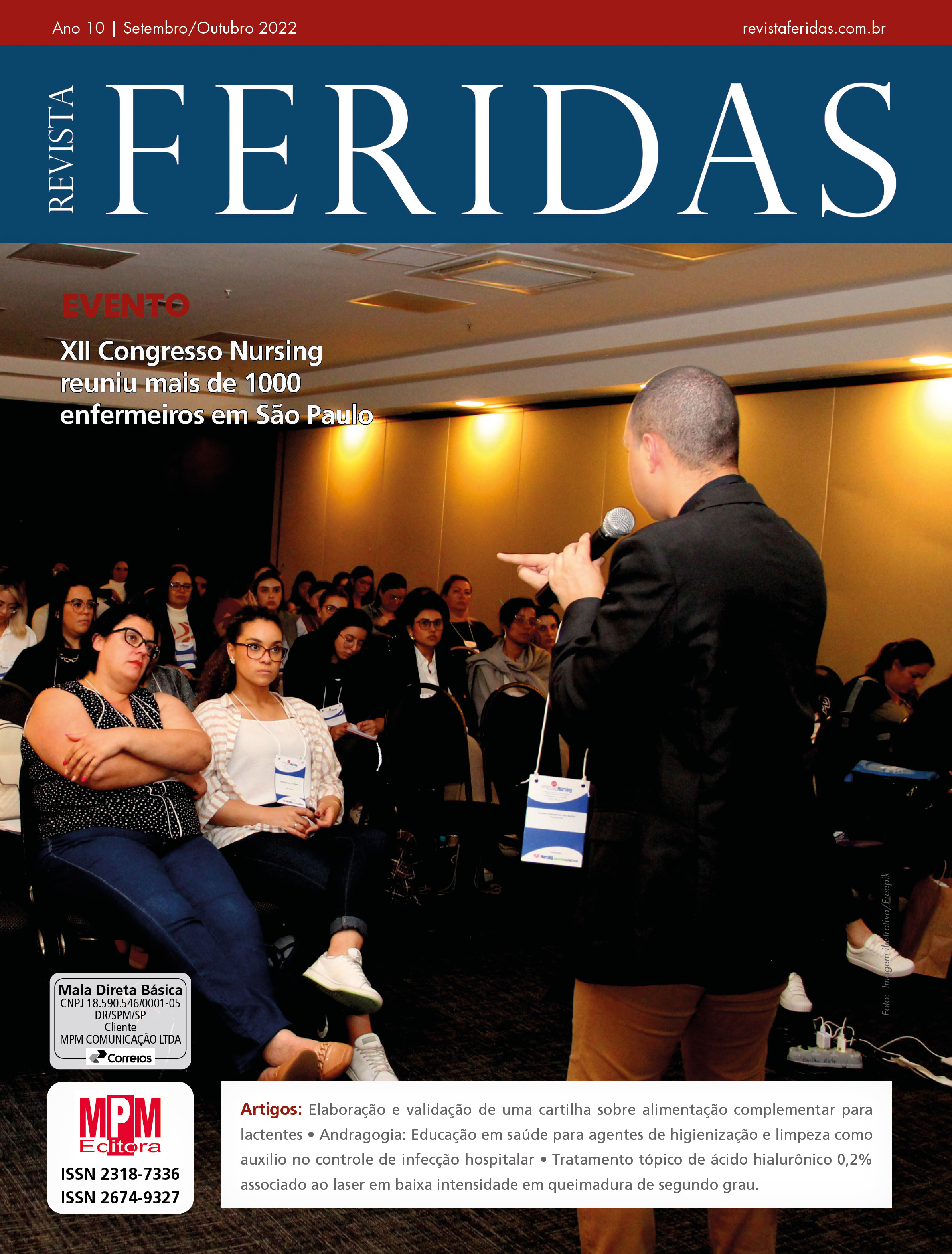Topical treatment of 0.2% hyaluronic acid associated with low intensity laser in second degree burns.
DOI:
https://doi.org/10.36489/feridas.2022v10i56p2042-2046Keywords:
Hyaluronic Acid, burns, wound healing, PhotobiomodulationAbstract
Objective: To describe, through a professional experience report, the topical use of 0.2% Hyaluronic acid (Hyaludermin®) associated with Low Intensity Laser (LLLT) in the healing of second-degree burns. Method: This is a report of professional experience through autonomous care by specialist dermatotherapist nurses. This study describes the treatment protocol applied to a second-degree burn injury in a 64-year-old patient who suffered a burn from a pressure cooker scald. A photographic record and evaluation of the wound were carried out, observing the variables of healing time, appearance of unsightly healing and the final aesthetic effect. Results: Initially, a treatment protocol was performed with 1% silver sulfadiazine associated with 1J red LLLT in the wound bed and 2J Infrared in the adjacent area. As there was no resolution, treatment with hyaluronic acid (HA) 0.2% was started daily with maintenance of the LLLT protocol. After 21 days of treatment, complete healing of the lesion was observed. Topical treatment with 0.2% HA was maintained over the re-epithelialized area. The scar presented with improvement of hyperpigmentation of unsightly healing. Conclusion: Topical application of 0.2% HA in association with LLLT in burns brought benefits in reducing healing time and the final aesthetic result.



